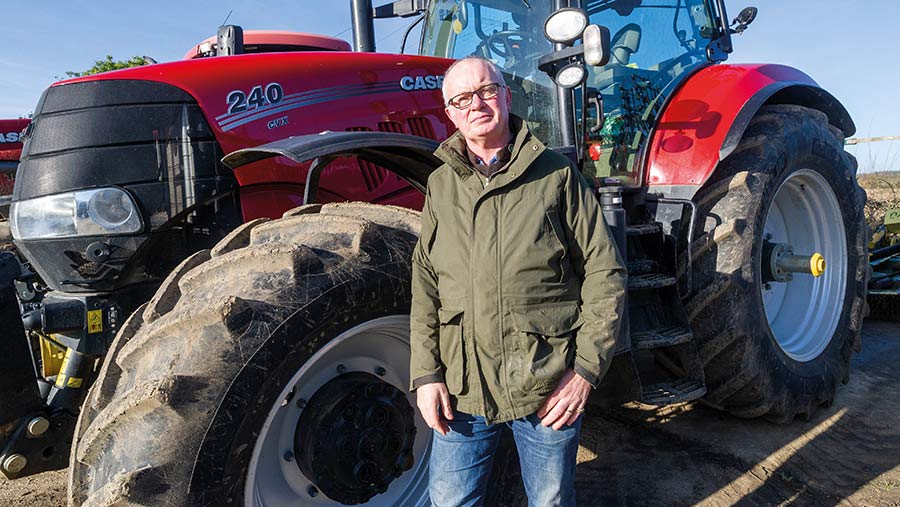Farmer Focus: Findings of a week-long pilgrimage in Scotland
 John Pawsey © Jason Bye
John Pawsey © Jason Bye I recently spent a week-long pilgrimage in Scotland to visit the farms where the maternal side of my family’s ancestors came from.
My great-grandfather, John Wood Alston, came down to Essex from Winkinfield Farm near Darvel, in Ayrshire, in the 1890s before buying farms in Norfolk and Suffolk.
My grandmother, Bathia Davidson, came from Ladysford Farm in Aberdeenshire, where my cousin James Davidson still farms.
See also: Farmer Focus: April snow and a hefty machine repair bill
James’ freshly strawed sheds were full of some of the best-looking beef cattle I have seen and his large fields of oilseed rape, winter wheat and spring barley would put any Suffolk farmer to shame.
It was easy to see why fewer Aberdeenshire farmers came south back in the day. However, it was a different situation in the mainly grass fields of Darvel, Ayrshire.
In the midst of low grain prices due to the repeal of the Corn Laws, a series of bad harvests in the 1880s and the refusal of many East Anglian farmers to switch from growing unprofitable crops of commoditised wheat, offered opportunities for the hard-working dairy farmers of Ayrshire to supply an expanding London market with fresh produce.
Is anything sound familiar? Look busy, the Scots are coming.
Back on the farm, we completed our last three days of spring drilling in the first week of April and have undersown our herbal leys in February-planted spring oats.
The success of our organic rotation is built on these fertility builders and so getting their establishment right is crucial.
When we first converted to organic we tried to plant leys in the autumn, but over the past 20 years we found that undersowing into a fine tilth in the spring with the benefit of some winter moisture into a warming soil is usually more successful.
Leaving the crop unrolled at sowing leaves a good tilth for establishment when the oats are at the three-leaf stage, followed by a Cambridge roll for good seed/soil contact. These are emerging as I write.
If any readers have stories of their own family’s migration from Scotland, I would be very pleased to hear from you.


